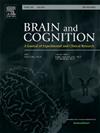认知储备在年轻认知障碍中的作用
IF 1.4
3区 心理学
Q3 NEUROSCIENCES
引用次数: 0
摘要
认知储备(CR)反映了大脑对病理的恢复能力,使大脑在结构损伤的情况下仍能保持功能。本研究探讨了它在年轻发病的认知障碍(65岁)中除了脑完整性和神经变性之外的作用。参与者接受了神经心理学评估,包括认知储备指数问卷(CRIq)、磁共振成像(MRI)和血液神经丝轻链(NfLs)测量。整体认知和特定领域认知的得分由神经心理学结果的主成分分析得出。线性回归模型估计了CR对整体和特定领域认知的贡献,以及年龄、性别、MRI测量和nfl作为预测因子。在115名参与者中,整体认知被CR[效应量(ES) = 0.229]、灰质体积(ES = 0.348)和nfl (ES = - 0.302)显著解释。CR对语言和注意执行功能的影响是显著的:虽然与教育相关的CRIq分值预测了这两个领域的表现,但与休闲活动相关的分值仅与语言领域呈正相关。这些发现强调了CR在年轻发病的认知障碍中的保护作用,特别是在非遗忘性认知领域。由于高CR可以掩盖或补偿延迟其诊断的神经认知障碍,我们的研究结果表明,在解释神经心理学测试时应考虑CR的测量,包括休闲活动的时间。本文章由计算机程序翻译,如有差异,请以英文原文为准。
Cognitive reserve in young-onset cognitive impairment
Cognitive reserve (CR) reflects brain’s resilience to pathology, enabling to maintain function despite structural damage. This study investigates its role in young-onset cognitive impairment (<65 years) beyond brain integrity and neurodegeneration. Participants underwent neuropsychological assessment – including the Cognitive Reserve Index questionnaire (CRIq) –, magnetic resonance imaging (MRI), and blood neurofilaments light-chain (NfLs) measurement. Scores of global cognition and domain-specific cognition were derived from Principal Component Analyses of neuropsychological results. Linear regression models estimated CR’s contribution to global and domain-specific cognition, alongside age, sex, MRI measures, and NfLs as predictors. Among the 115 participants, global cognition was significantly explained by CR [effect size (ES) = 0.229], grey matter volume (ES = 0.348), and NfLs (ES = −0.302). The effect of CR was prominent on language and attentional-executive functions: while the CRIq subscore related to education predicted performance in both these domains, the subscore related to leisure activities was positively associated with the language domain only. These findings highlight CR’s protective role in young-onset cognitive impairment, particularly for non-amnestic cognitive domains. Since a high CR can mask or compensate for neurological cognitive disorders delaying its diagnosis, our results suggest that measures of CR, including time spent on leisure activities, should be considered when interpreting neuropsychological tests.
求助全文
通过发布文献求助,成功后即可免费获取论文全文。
去求助
来源期刊

Brain and Cognition
医学-神经科学
CiteScore
4.60
自引率
0.00%
发文量
46
审稿时长
6 months
期刊介绍:
Brain and Cognition is a forum for the integration of the neurosciences and cognitive sciences. B&C publishes peer-reviewed research articles, theoretical papers, case histories that address important theoretical issues, and historical articles into the interaction between cognitive function and brain processes. The focus is on rigorous studies of an empirical or theoretical nature and which make an original contribution to our knowledge about the involvement of the nervous system in cognition. Coverage includes, but is not limited to memory, learning, emotion, perception, movement, music or praxis in relationship to brain structure or function. Published articles will typically address issues relating some aspect of cognitive function to its neurological substrates with clear theoretical import, formulating new hypotheses or refuting previously established hypotheses. Clinical papers are welcome if they raise issues of theoretical importance or concern and shed light on the interaction between brain function and cognitive function. We welcome review articles that clearly contribute a new perspective or integration, beyond summarizing the literature in the field; authors of review articles should make explicit where the contribution lies. We also welcome proposals for special issues on aspects of the relation between cognition and the structure and function of the nervous system. Such proposals can be made directly to the Editor-in-Chief from individuals interested in being guest editors for such collections.
 求助内容:
求助内容: 应助结果提醒方式:
应助结果提醒方式:


